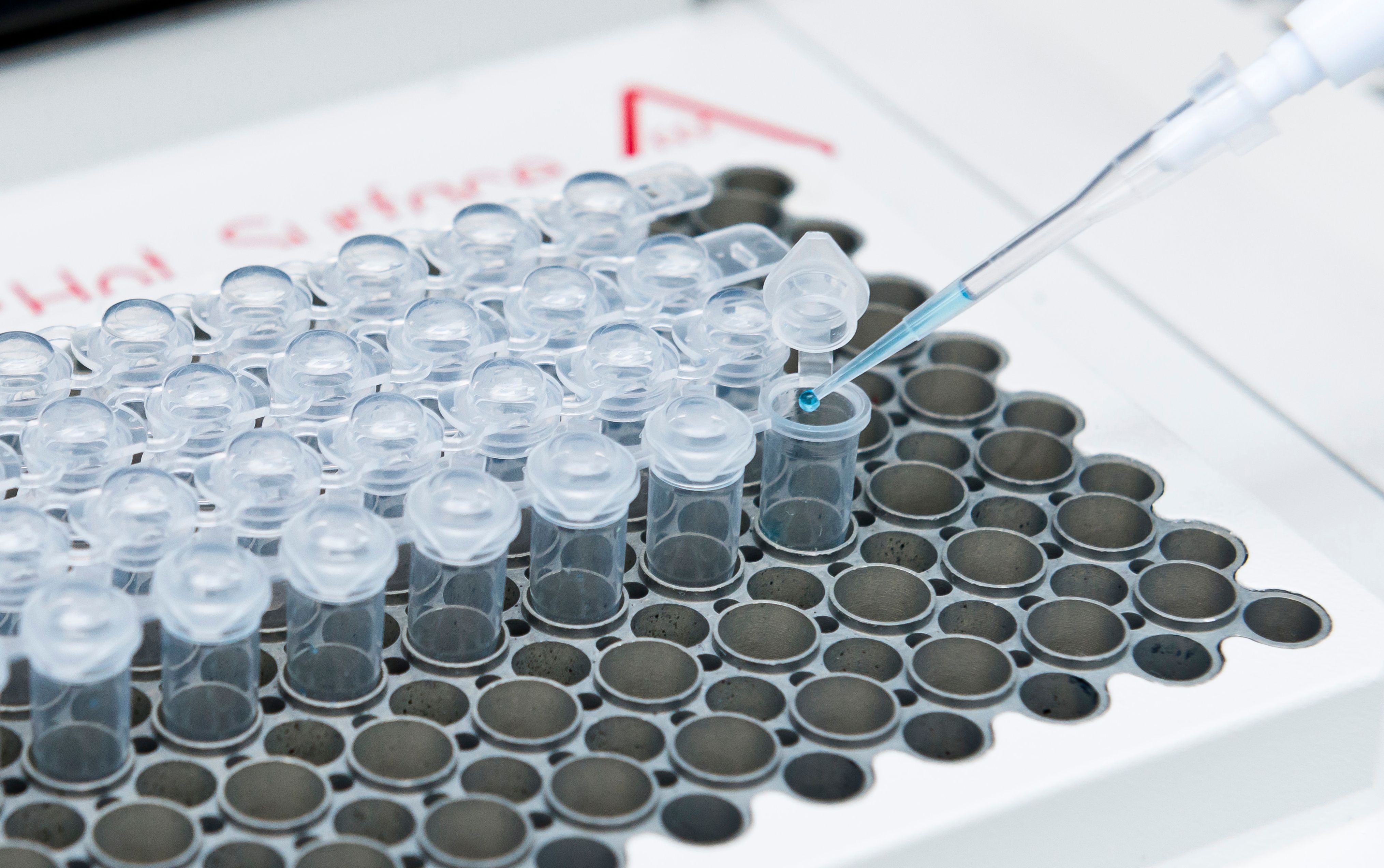Accelerating Oligonucleotide Characterization: Microfluidic Capillary Electrophoresis Mass Spectrometry Unveils Swift Analysis
Microfluidic capillary electrophoresis mass spectrometry (CE-MS) using ZipChip technology provides intact mass evaluations and efficient separation of oligonucleotides.
As the field of biopharmaceuticals continues to evolve, the pursuit of efficient analytical techniques plays a pivotal role in understanding crucial quality attributes. The Journal of the American Society for Mass Spectrometry has recently published a study by research scientists Jennifer L. Lippens, Heath C. Timmons, and Tawyna G. Flick, of Amgen in Thousand Oaks, California, and Crystal Welch and Aditya Kulkarni, of 908 Devices in Boston, Massachusetts, that introduces microfluidic capillary electrophoresis mass spectrometry (CE-MS) as a rapid avenue for intact mass analysis of oligonucleotide single strands (1).
Ressearcher mix DNA, polymerase and oligonucleotides in PCR tubes on the thermal cycler | Image Credit: © HYUNGKEUN - stock.adobe.com

Oligonucleotide analysis, a domain which is crucial for biopharmaceutical advancements, traditionally relies on liquid chromatography–mass spectrometry (LC–MS). However, LC–MS methods often demand lengthy sample run times (exceeding 15 min) to achieve the necessary separation of diverse oligonucleotide species. Furthermore, the use of additives like triethylamine and 1,1,1,3,3,3-hexafluoro-2-propanol in LC methods, while effective, may not align with the preferences of mass spectrometry instrumentation.
To address these challenges, the research team leveraged the ZipChip technology within the microfluidic CE-MS platform to streamline intact mass analysis of oligonucleotide single strands. The ZipChip is a microfluidic device that combines capillary electrophoresis (CE) and electrospray ionization (ESI). The results proved to be significant, achieving baseline separation of oligonucleotides with equal lengths in less than 4 min, marking a substantial reduction in analysis time compared to traditional methods.
The ZipChip technology, a key player in this study, facilitated the swift separation of oligonucleotide full-length products (FLPs) and their impurities, showcasing its potential as a versatile tool in oligonucleotide analysis. The rapid analysis offered by CE-MS not only accelerates the research process but also mitigates the need for mobile phase additives that might not be ideal for mass spectrometry instrumentation.
This innovative approach holds promise for the biopharmaceutical industry, where timely insights into oligonucleotide characteristics are crucial for ensuring product quality. The streamlined CE-MS technique presents itself as an efficient alternative to the time-consuming LC–MS methods, demonstrating the feasibility of rapid and reliable oligonucleotide analysis.
The study sheds light on the transformative potential of microfluidic CE-MS in the realm of oligonucleotide characterization. The ZipChip technology's ability to achieve baseline separation in a fraction of the time opens new doors for expedited analysis, offering researchers a valuable tool for gaining swift and precise insights into the intricate world of oligonucleotides.
This article was written with the help of artificial intelligence and has been edited to ensure accuracy and clarity. You can read more about our policy for using AI here.
Reference
(1) Lippens, J. L.; Timmons, H. C.; Welch, C.; Kulkarni, A.; Flick, T. G. Rapid Intact Mass Analysis and Evaluation of the Separation Potential of Microfluidic Capillary Electrophoresis Mass Spectrometry for Oligonucleotides. J. Am. Soc. Mass Spectrom. 2023, 34 (11), 2491–2497. DOI: 10.1021/jasms.3c00217
New Method Explored for the Detection of CECs in Crops Irrigated with Contaminated Water
April 30th 2025This new study presents a validated QuEChERS–LC-MS/MS method for detecting eight persistent, mobile, and toxic substances in escarole, tomatoes, and tomato leaves irrigated with contaminated water.

.png&w=3840&q=75)

.png&w=3840&q=75)



.png&w=3840&q=75)



.png&w=3840&q=75)


